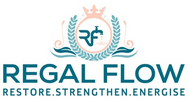
Does Reverse Osmosis Remove Viruses from Water? Understanding the Filtration Process
Does your water have the flu? Probably not — but it might have a few unwelcome viral guests. In this article, we’ll uncover whether reverse osmosis (RO) can boot viruses out of your drinking water for good. Short answer? Yes — reverse osmosis removes most viruses thanks to its ultra-fine membrane. But there’s more to clean water than just RO alone. Exploring Reverse Osmosis: Detailed Analyses and Practical Uses breaks it all down—stick around to discover how it works, why countertop dispensers and reverse osmosis make a dream team, and what else you can do to make sure your water’s squeaky clean.
Understanding Viruses and Water Contamination
What are Viruses and How Do They Get into Water Sources?
Viruses are cheeky little blighters. You can’t see them, smell them, or taste them — but they’re experts at slipping into water supplies unnoticed. These microscopic agents aren’t alive in the usual sense; they can’t multiply on their own. But give them a living cell to hijack, and they’ll cause all sorts of havoc. Water becomes contaminated with viruses through sources like raw sewage, leaky pipes, or animal waste that washes into rivers and lakes. One quick cup of dodgy water? That’s all it takes to end up glued to the loo.
Common Waterborne Viruses and Their Health Risks
Here’s a rogues’ gallery to keep in mind:
-
Norovirus — The cruise ship stomach bug champion
-
Hepatitis A — A liver-attacking troublemaker
-
Rotavirus — A notorious diarrhoea-spreader in children
-
Enteroviruses — Culprits behind colds and more serious illnesses
Even clear-looking water can pack an invisible viral punch.
Sources of Viral Contamination (Sewage, Animal Waste)
Let’s not sugar-coat it — viruses love dirty water. Common culprits are:
-
Overflowing sewage systems
-
Farmyard runoff packed with animal waste
-
Leaky septic tanks and poorly treated wastewater
-
Contaminated groundwater in old wells
Not exactly what you want in your cuppa.
The Size Difference Between Viruses and Other Waterborne Contaminants (Bacteria, Sediment, Chemicals)
Here’s the thing — viruses are absolutely tiny. To help picture it:
-
Sediment = 1–100 microns (think fine sand)
-
Bacteria = 0.2–10 microns (smaller but still chunky)
-
Viruses = 0.02–0.4 microns (tiny specks compared to the rest)
You could fit thousands of viruses across the width of a human hair. Small, but mighty.
How Reverse Osmosis Works as a Filtration Method
The Principle of Semi-Permeable Membranes
Reverse osmosis is like a top-class security guard for your water. The semi-permeable membrane lets tiny water molecules pass through but blocks larger particles like bacteria, salts, and viruses. It’s basically a microscopic sieve — just with far tighter rules than your nan’s tea strainer.
The Filtration Process Under Pressure
For reverse osmosis to work properly, water needs a bit of a shove. Pressure forces it through the membrane. Clean water squeezes through one side, leaving nasties trapped on the other. It’s water’s equivalent of pressing juice through a fine muslin cloth.
Pore Size of RO Membranes and Its Effectiveness Against Different Contaminants
RO membranes don’t mess about. Their pores measure 0.0001 microns — that’s 500,000 times smaller than the width of a human hair.
That means they can block:
-
Bacteria
-
Viruses
-
Heavy metals and salts
Basically, it’s a microscopic brick wall with no shortcuts.
The Effectiveness of Reverse Osmosis in Removing Viruses
The Typical Size Range of Viruses and RO Membrane Pore Size
Viruses measure 0.02–0.4 microns. RO membranes? 0.0001 microns.
That size mismatch is your best friend — most viruses simply can’t squeeze through. It’s like trying to push a beach ball through a pinhole.
Log Reduction and Virus Removal Efficiency in RO Systems
Virus removal is often measured in log reduction (think percentages with extra oomph):
-
3-log reduction = 99.9% removed
-
4-log reduction = 99.99% removed
Well-maintained RO systems typically hit between 3 to 5-log reductions. In short, most viruses don’t stand a chance.
Factors Affecting Virus Removal by RO (Membrane Integrity, System Maintenance)
Of course, no filter works perfectly if it’s falling apart. Virus removal depends on:
-
A membrane with no cracks or tears
-
Adequate water pressure
-
Regular cleaning and maintenance
A neglected system? That’s like leaving the front door wide open.
Does RO Alone Guarantee Virus-Free Water?
The Importance of Pre-Filtration in RO Systems (Sediment Filters, Carbon Filters)
RO systems don’t work alone — they’re part of a team. Pre-filters trap dirt and chemicals before the water hits the membrane. This stops clogging and protects the delicate membrane layer. Think of pre-filters as the warm-up act that makes the headline show flawless.
The Role of Post-Filtration and Disinfection (UV, Chlorination) for Complete Virus Inactivation
Here’s a crucial point — RO removes viruses but doesn’t kill them. That’s where UV disinfection steps in. It zaps virus DNA so they can’t replicate. Or you can use small amounts of chlorine post-filtration (though that can alter taste). Belt and braces? Definitely. But smart.
Certifications and Standards for Virus Removal in Water Filtration Systems (e.g., NSF/ANSI)
When shopping for a system, look for these gold stars:
-
NSF/ANSI Standard 58 — RO systems
-
NSF/ANSI Standard 55 — UV systems
These badges mean the kit’s been tested and actually does what it says on the tin.
Best Practices for Ensuring Virus-Free Drinking Water
Maintaining Your RO System Properly (Regular Filter Changes, Membrane Replacement)
Your RO system needs regular TLC:
-
Swap pre-filters every 6–12 months
-
Replace membranes every 2–3 years
-
Clean the system as recommended by the manufacturer
Like a good car, it runs best with regular servicing.
Considering Additional Disinfection Methods
Extra cautious? No harm in it. You can add:
-
UV post-treatment units
-
Point-of-use chlorination kits
-
Boiling water if you suspect contamination
These are handy backups — especially if your water source is a bit sketchy.
Testing Your Water Quality
Don’t just guess — test. Regular checks can spot:
-
Bacteria or virus indicators (like coliforms)
-
Membrane damage
-
General water quality issues (TDS, chlorine, pH)
Peace of mind in a bottle (or mug).
Conclusion: Ensuring Safe Drinking Water with Reverse Osmosis
Reverse osmosis is a brilliant start for virus removal — but it shines brightest when paired with extras like UV disinfection or careful maintenance. With a well-looked-after countertop dispenser and reverse osmosis system, you can sip confidently knowing you’ve given viruses their marching orders. Cheers to clear, clean water.
More Reverse Osmosis info we think you'll love
Is Reverse Osmosis Water Chlorine Free?
Is Reverse Osmosis Water the Best?
Is Reverse Osmosis Good for Well Water?
Can Reverse Osmosis Remove Lead?
Can Reverse Osmosis Remove PFAS?
Can Reverse Osmosis Remove Salt?
Is a Reverse Osmosis System Needed for Window Cleaning?
How do I Maintain my Reverse Osmosis System for Longevity and Performance?
Is Reverse Osmosis Water Good for Coffee? Exploring Water Quality for the Perfect Brew
Reverse Osmosis vs. Carbon Filters for Well Water: Which is Best for Your Needs?


Leave a comment